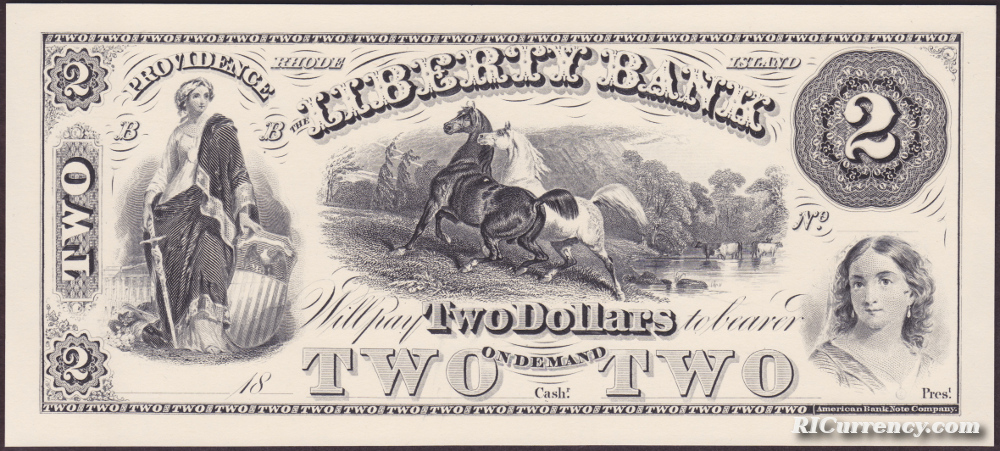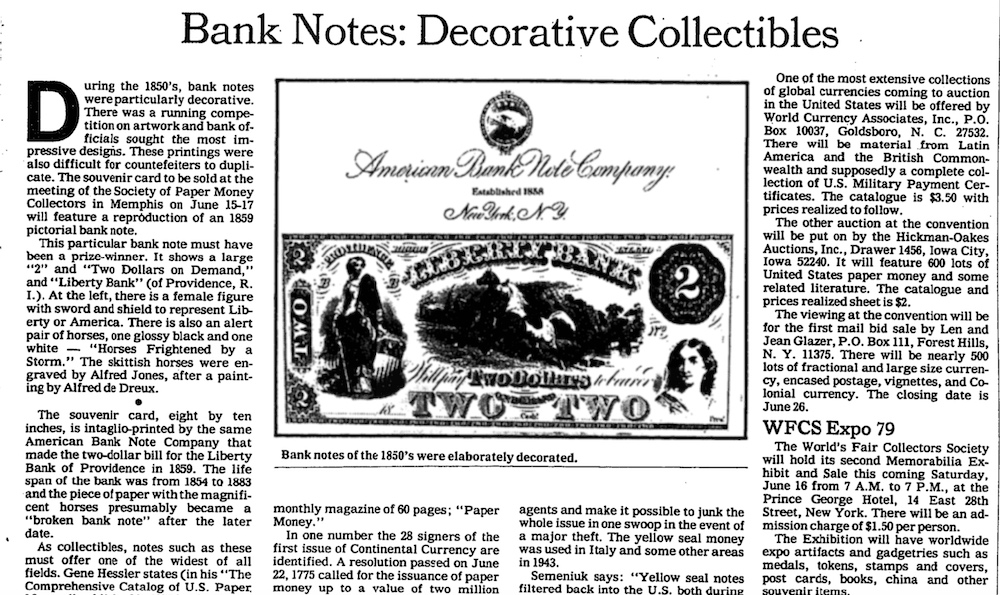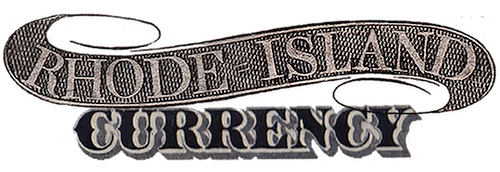Liberty Bank $2

1979 Souvenir Card. Souvenir Card Collectors Society #SO 9
This is a modern reprint of an 1850s design first engraved by Toppan, Carpenter, Casilear & Co. After that company merged with others and became the American Bank Note Company in 1858, The TCC imprint was replaced by one from the ABNCo. Genuine $2 bills from the Liberty Bank of Providence issued during this period are cataloged as Durand 1444, Haxby RI-325 G6 and Bowers W-RI-1010-002-G030.
However, the note seen above is something else entirely.
It was cut out from a larger sheet made as a souvenir of the June 15-17, 1979 convention for the Society of Paper Money Collectors in Memphis, Tennessee. It was created by the American Bank Note Company using dies from an original, 19th-century engraving plate and bears that company’s imprint as part of the border design at the bottom right.
Cards such as these are printed on thick, modern, buff-colored paper, unlike earlier, original banknotes. Like the example here, these modern creations tend to have a grayer tone to the ink with less contrast than their older counterparts.
19th-century printers’ proofs, on the other hand, were often made with very thin India paper. This soft paper, when laid on top of a firm card backing during the impression, resulted in banknotes with sharply-detailed designs. The look of these notes is often whiter and the ink is more vibrant. If this were an 1850s proof created for the original printer’s record books, it would bear a Toppan, Carpenter, Casilear & Co. imprint.
It’s not always easy to distinguish between a souvenir card and an original 19th-century proof, particularly from an online image. The issue is further complicated when the notes are cut out from the larger card, like the $2 note here, possibly to fool buyers on eBay.
The price difference between old and new can be dramatic. Modern cards were often printed in the hundreds and can sell for as little as $5. Original 19th century proofs can be quite rare, or even unique, and can fetch in the thousands at auction.
Fortunately, the Souvenir Card Collectors Society and numismatists like Ken Barr have kept a record of the souvenir cards created in the last fifty years and these lists can be used to identify such modern products. You can see Ken’s website here.

In a June 10, 1979 article on the paper money collecting, the New York Times featured an image of the SPMC souvenir card with the Liberty Bank $2 note.
